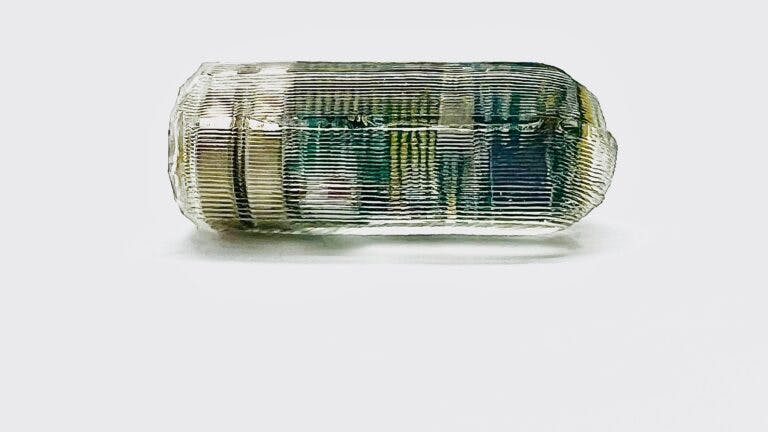New swallowable device could improve diagnosis of GI diseases
If you’ve been screened for a GI disorder, we’re not making a wild guess when we assume it probably wasn’t your favorite doctor’s office visit.
The current gold standard for diagnosing many GI conditions—from constipation to acid reflux—is likely to make patients flinch. It can involve endoscopy—where a long tube is lowered down your throat—or manomatery—where a tube is lowered down your nostril.
All of those tubes could soon be replaced with something a lot more comfortable with this technological advancement.

A team of researchers from MIT, Caltech, and NYU have designed an ingestible device that could make diagnosing gastrointestinal diseases significantly more comfortable.
The device’s mechanics are inspired by the science of MRIs, which localize hydrogen atoms to create images. Instead, the device works by detecting a magnetic field from a coil outside the body, which allows the team to localize the device.
The research team imagines the coils can be placed on a jacket—for continuous monitoring—or on a toilet—for intermittent images.
An improvement for providers: taking GI monitoring 3D
The device’s development comes on the heels of other less-invasive diagnostic innovations in the GI field, like Medtronic’s SmartPill.
However, this device, unlike its predecessors, makes it possible to track its location in real time, making it a boon for GI providers as well.
“You can imagine this as a GPS for the body, but we don’t need the triangulation technique, instead you’re using an MRI-inspired technique,” said Caltech engineering professor and research team member Azita Emami. “This allows us to achieve higher-resolution inside the body.”
In fact, the device’s monitoring accuracy allows for 3-dimensional tracking in the GI tract. With in vivo testing in pigs, the research team demonstrated that the device’s accuracy matches that of an X-ray.
“In principle, one could be evaluated at home and then you could see how something is moving in three dimensions in the GI tract to help map, for example, dysfunction in the rectum,” said MIT engineer Gio Traverso, who focused on the device’s medical applications as part of the team.
Armed with the knowledge of a GI disruption’s exact location, for example, providers can better target their care.
GI screening gets more patient-friendly
The possibility of at-home use further compounds the increase in accessibility and decrease in discomfort for patients who need GI screening.
GI screening already has a bad rap among many patients. Besides being uncomfortable, GI testing like colonoscopies can be tricky for some patients to access (or have covered by insurance). Thus, the availability of simpler, at-home options could greatly improve patients ability (and willingness) to be tested and catch disease progression earlier.
Many patients could benefit from the availability and accessibility of earlier, more frequent, and less invasive screening for GI disease—especially as the incidence of gastric and colorectal cancers appears to be rising in younger people, who are below the recommended (and insurance-covered) screening age for these diseases in the U.S.
We’re especially encouraged by the potential of diagnostic technology that shows promise for a high level of accuracy.
Next steps for the swallowable GI probe
Other potential applications members of the research team are interested in exploring with the device include targeted drug delivery and precision surgery.
The team’s next steps for the GI monitoring application include testing on humans, as the device has only been tested on mice and pigs so far.
Leslie Chan, a Georgia Tech biomedical engineer interviewed about the device by STAT, noted that another important area of inquiry is the practical question of coil placement.
“These sorts of logistics need to be defined, and it might vary from patient to patient,” Chan said.
With more research, the team may be on their way to a maximally-comfortable and truly customizable remote patient monitoring technology. And thankfully, no tubes in sight.